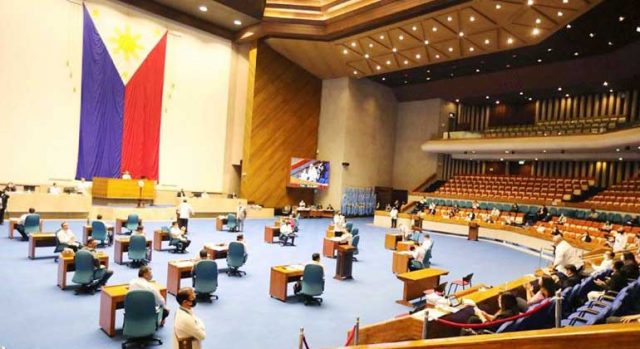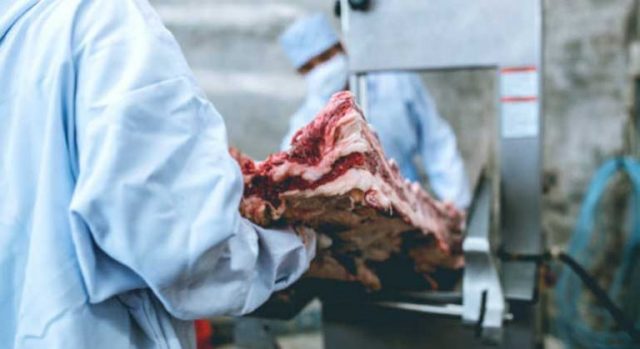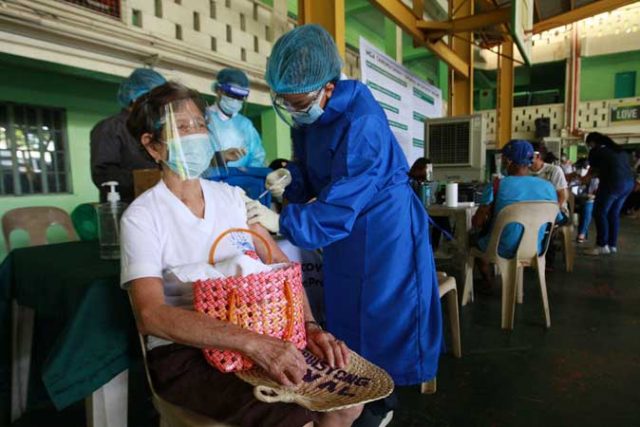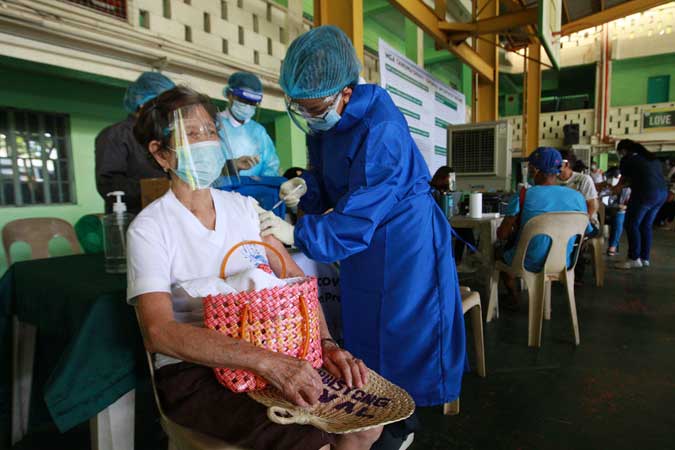(Second of three parts)
Economic prospects for 2021 look bleaker by the day as COVID-19 cases are rising and our Government can’t seem to get their act together in effectively distributing the vaccines available and managing more expertly the necessary balance between public health and the economy. In my own economic forecast, the Philippines shall continue to see paralyzing lockdowns as we suffer from additional surges of even more infectious varieties of this deadly virus. I do not expect positive GDP growth till the fourth quarter of the current year, coming mostly from the Government’s stimulus packages and the Build, Build, Build program. The only other major source of growth will be from the more than 10 million Overseas Filipinos who are literally our global front liners helping to carry the burden of the Philippine economy as our doctors, nurses, and health workers are the front liners caring for the health of the population. As I wrote in the first part of this series, we can expect as much as a 7% increase in the remittances sent by Overseas Filipino Workers (OFWs) to their relatives at home for the whole of 2021.
Why am I bullish about OFW remittances?
The first reason is the evidence from last year that our workers abroad thrive in adversity. Despite the fact that practically all of their major host countries in Europe and the Middle East suffered huge economic losses and a good number of them had to return to the Philippines because they were laid off, the remittances that came from them hardly fell. There was a slight decrease of 0.8% (compared to the catastrophic decline of GDP by 9.5, the worst in East Asia). The close to $30 billion that these OFWs sent to their relatives helped in preventing an even deeper decline in consumption expenditures that are the primary engine of growth of our economy. Thanks to these cash remittances, the low-cost and economic housing segments of the real estate sector continued to thrive (as contrasted with the more expensive housing units that have suffered a glut). The financial assistance that their families received from them also helped their children avoid the tragic fate of the 2.7 million students who had to stop schooling during the school year 2020-2021 because of the loss of income of the breadwinners of their respective families. The very high priority given by the families of the OFWs to education is helping to mitigate the ongoing educational crisis that will surely prejudice the future of the Philippines as many children and young people today are unable to have access to quality education or, for that matter, any education at all. A Consumer Expectations Survey conducted by the Central Bank research department in the last quarter of 2019 showed that 97% of the OFW households spent the remittances on essential items like food and other household needs while 64% put them in education and 44% to cover medical expenses.
It is estimated by the Overseas Workers Welfare Administration that since 2020, 489,451 OFWs have been repatriated as of March 25, 2021, of which 20% came back to the Philippines during the first quarter of this year. More updated information comes from the Department of Health which reported on March 25, 2021 that a total of 1,031,495 million Returning Overseas Filipinos (ROFs) have arrived in the country, among whom 651,628 were land-based; 371,764 sea-based; and transferees from Sabah,1,986. Of these, 1,024,170 were released from facility quarantine (land-based, 651,626; sea-based, 370,558; and Sabah, 1,986). Among these ROFs, 15,394 were confirmed COVID-19 patients. Of these, 9,675 were land-based and 5,719 were sea-based. Among the confirmed COVID-19 patients, 378 are currently admitted, 14,985 have already recovered and 10 have died. It is cause for celebration that a very small number of the ROFs have passed away from COVID-19. We have among them still a very large human resource pool from which we can have productive workers who can be redeployed either in the Philippines (especially in the construction industry or health sector) or once again, especially among the younger ones, as Overseas Filipino Workers. Once the economies of their former host countries rebound sometime this year, some of them can reapply for work, especially in the Middle East that is getting a big help for recovery from the much higher oil prices that are expected to rise above $70 per barrel. The downside for the Philippine economy of these higher oil prices is greater inflationary pressure on our domestic economy. It is already a certainty that average inflation for 2021 in the Philippines will be closer to 5%.
To have an idea of the post-pandemic prospects of OFWs, let us analyze the data provided by the Commission on Filipinos Overseas. In the latest report of this Commission, the 10.2 million Filipinos Overseas (not necessarily all are OFWs) are categorized as follows: 4.8 million are permanent migrants (already citizens or permanent residents in their host countries); 4.2 million are temporary migrants (especially in the Middle East and East Asian countries), and 1.2 million are irregular migrants. All of them are spread out in more than 200 countries and territories. Although a good number of them are already permanent citizens in their host countries, they can still be a major source of remittances to their relatives in the Philippines, especially among those in the United States.
During the height of the pandemic in 2020, a leading researcher on OFWs, Dr. Bett Esposo Ramirez from the University of Asia and the Pacific, monitored the conditions of OFWs in select countries. She reported her findings in a paper entitled “OFWs in their country of work amidst COVID-19 pandemic.” According to her, in Macau, pending legislation on the conversion from tourist to worker status can allow Filipinos stranded in that part of China to stay and supplement the scarce labor supply. In Taipei, Labor Attaché Cesar Chavez, Jr. reported that the factories where thousands of Filipinos work were still operational. Some of the OFWs chose to pre-terminate their contracts to receive their bonuses. Those who elected to stay in Taiwan received the benefits specified in their contracts. In Japan, the Philippine Overseas Labor Offices (POLO) Labor Attaché in Osaka, Elizabeth Estrada, reported that OFWs with a residence card are given JPY100,000 (Php 47,000) one-time assistance. For those who had worked in Japan for at least six months and had made insurance payments, Unemployment Insurance of up to 80% of their salary was provided. Aside from the financial assistance, the Japanese government also allowed a visa extension of three months so that the employees could continue working while waiting for the situation to normalize.
Countries in the Middle East, where some 40% of the OFWs work, also manifested some of the most friendly policies towards immigrant workers, reflecting their dire need for them. POLO Bahrain Labor Attaché Vicente Cabe announced that Bahrain had granted an amnesty for undocumented or “irregular” migrant workers who were allowed to legalize their stay and were issued visas to prolong their stay. In Oman, POLO Labor Attaché Greg Abalos reported that the country had started to shift to “Omanization” under which certain jobs held by expats would be given to Oman citizens. Instead of prejudicing OFWs, this measure would benefit them because there would be a greater demand for household service workers (HSWs) as Oman citizens leave their homes to join the workforce. POLO Riyadh Labor Attaché Nasser Mustafa said that the Ministry of Labor of Saudi Arabia issued a standing order against employee termination during the COVID-19 pandemic. OFWs received their salaries during the 14-day quarantine after which they received Paid Leave. Subsequently, they were under the No work, No pay scheme with food allowance and accommodations provided by their employers.
This information gathered by Dr. Ramirez on the practices of host countries may give some clues as to which countries, among others, will be most likely to welcome more Filipino immigrant workers after they have the pandemic under reasonable control. Our Northeast Asian neighbors, represented in the survey conducted by Dr. Ramirez by Japan and Macau, and the Middle Eastern countries represented by Saudi Arabia and Oman, are the ones who most appreciate the services of our workers. They should be on top of the list of Filipinos seeking post-pandemic employment opportunities abroad. The Northeast Asian countries are among those hardest hit by very low fertility rates (as low as 0.8 to 1.1 babies per fertile woman) and, therefore, suffer from severe labor shortages. On the revenue side, the Middle Eastern countries are the most benefited by the skyrocketing prices of oil that can enable them to resume a lot of infrastructure projects that will need many construction workers.
Meanwhile, as the last 12 months have demonstrated when more than 1 million Overseas Filipinos returned, those who remained abroad were still able to be a strong support of our domestic economy. As Dr. Ramirez ended her paper: “The labor situation overseas is not stable and options are few. There are a lot of sacrifices, fear, uncertainty and confusion among migrant workers. And yet, the many millions who have decided or are compelled to stay in their country of work continue to communicate and send remittances to their family and relatives in the Philippines who are also affected by the consequences of the COVID-19 pandemic.” These words, written very early at the start of the pandemic in 2020, were quite prophetic. Indeed, the sacrifices and sufferings of our OFWs have paid off. Remittances from them hardly dropped in 2020 when the whole world was undergoing the worst depression in a hundred years. Even brighter news: in 2021, our OFWs are expected to send 7% more income to the Philippines as we are still struggling to free ourselves from the paralyzing grip of this deadly virus called COVID-19.
To be continued.
Bernardo M. Villegas has a Ph.D. in Economics from Harvard, is Professor Emeritus at the University of Asia and the Pacific, and a Visiting Professor at the IESE Business School in Barcelona, Spain. He was a member of the 1986 Constitutional Commission.
bernardo.villegas@uap.asia
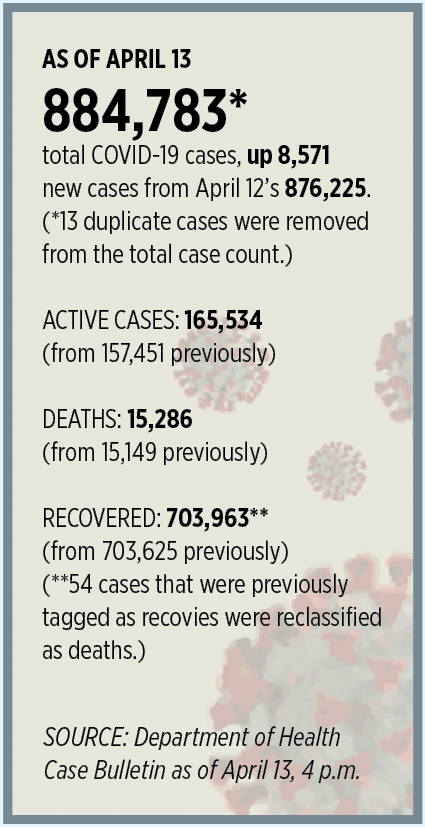 LRT-1 operations to be suspended for 2 weekends
LRT-1 operations to be suspended for 2 weekends

